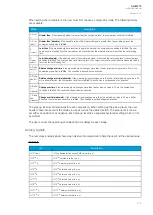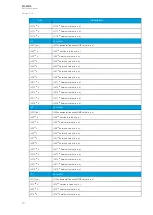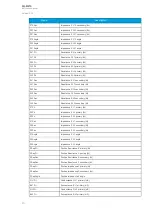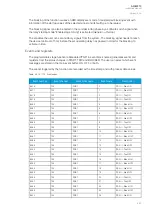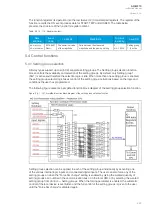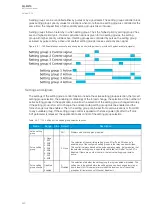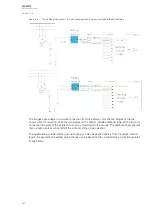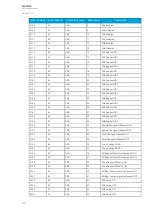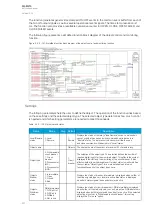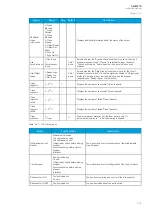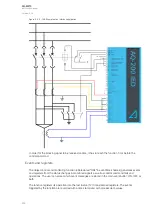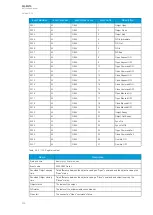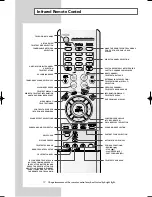
Name
Range Step Default
Description
Used setting
groups
0: SG1
1:
SG1...2
2:
SG1...3
3:
SG1...4
4:
SG1...5
5:
SG1...6
6:
SG1...7
7:
SG1...8
-
0: SG1
The selection of the activated setting groups in the application. Newly-enabled
setting groups use default parameter values.
Remote
setting
group change
0: None
1: SG1
2: SG2
3: SG3
4: SG4
5: SG5
6: SG6
7: SG7
8: SG8
-
0: None
This parameter can be controlled through SCADA to change the setting group
remotely. Please note that if a higher priority setting group is being controlled by
a signal, a lower priority setting group cannot be activated with this parameter.
Table. 5.4.1 - 116. Signals of the setting group selection function.
Name Range Step Default
Description
Setting
group
1
0: Not
active
1:
Active
-
0: Not
active
The selection of Setting group 1 ("SG1"). Has the highest priority input in setting group
control. Can be controlled with pulses or static signals. If static signal control is applied,
no other SG requests will be processed.
Setting
group
2
0: Not
active
1:
Active
-
0: Not
active
The selection of Setting group 2 ("SG2"). Has the second highest priority input in setting
group control. Can be controlled with pulses or static signals. If static signal
control is applied, no requests with a lower priority than SG1 will be processed.
Setting
group
3
0: Not
active
1:
Active
-
0: Not
active
The selection of Setting group 3 ("SG3"). Has the third highest priority input in setting
group control. Can be controlled with pulses or static signals. If static signal
control is applied, no requests with a lower priority than SG1 and SG2 will be
processed.
Setting
group
4
0: Not
active
1:
Active
-
0: Not
active
The selection of Setting group 4 ("SG4"). Has the fourth highest priority input in setting
group control. Can be controlled with pulses or static signals. If static signal
control is applied, no requests with a lower priority than SG1, SG2 and SG3 will be
processed.
Setting
group
5
0: Not
active
1:
Active
-
0: Not
active
The selection of Setting group 5 ("SG5"). Has the fourth lowest priority input in setting
group control. Can be controlled with pulses or static signals. If static signal
control is applied, SG6, SG7 and SG8 requests will not be processed.
Setting
group
6
0:Not
active
1:Active
-
0:Not
active
The selection of Setting group 6 ("SG6"). Has the third lowest priority input in setting
group control. Can be controlled with pulses or static signals. If static signal
control is applied, SG7 and SG8 requests will not be processed.
Setting
group
7
0: Not
active
1:
Active
-
0: Not
active
The selection of Setting group 7 ("SG7"). Has the second lowest priority input in setting
group control. Can be controlled with pulses or static signals. If static signal
control is applied, only SG8 requests will not be processed.
Setting
group
8
0: Not
active
1:
Active
-
0: Not
active
The selection of Setting group 8 ("SG8"). Has the lowest priority input in setting group
control. Can be controlled with pulses or static signals. If static signal control is applied,
all other SG requests will be processed regardless of the signal status of this setting
group.
A
AQ
Q-M210
-M210
Instruction manual
Version: 2.04
224
Содержание AQ-M210
Страница 1: ...AQ M210 Motor protection IED Instruction manual ...
Страница 308: ...Figure 7 4 182 Example block scheme A AQ Q M210 M210 Instruction manual Version 2 04 307 ...
Страница 329: ...Figure 8 13 204 Panel cutout dimensions and device spacing A AQ Q M210 M210 Instruction manual Version 2 04 328 ...



